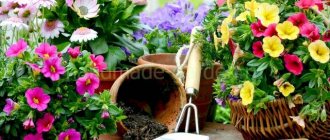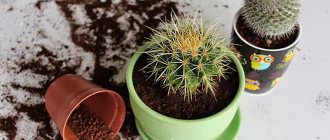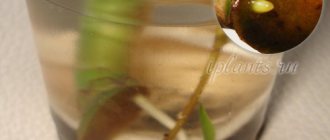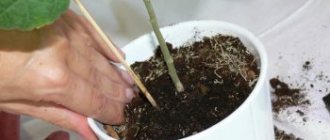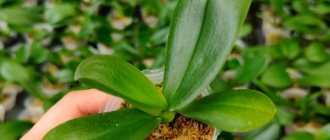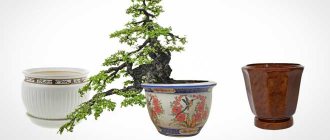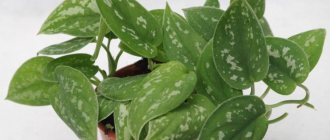When is the best time to replant plants?
In order to find out when to replant indoor flowers and whether there is a need for it, you should look at a couple of external factors that may appear if the plant already requires replanting.
The process of replanting a houseplant
You should pay attention to:
- The soil dries out too quickly after watering. This indicates that the root system has grown very much and a larger container is needed.
- Drainage holes - If roots are pushing out through these, this is a sign that a larger container is needed.
- Lack of growth or its strong slowdown.
- The appearance of diseases in the plant.
- Deterioration of the quality of the soil in the pot.
- Poor state of the root system.
It is important to remember that it is best to replant plants at certain time periods, otherwise there is a risk of harming the flower.
For example, it is worth changing the soil of recently purchased plants, but not immediately after purchase, but after a couple of weeks or a month. Because the plant has already experienced severe stress and climate change.
Attention! When purchasing a plant, it is necessary to allow the representative of the flora to adapt a little to its surrounding conditions and only then replant.
When can you replant indoor flowers according to the seasons?
As for the appropriate time of year for replanting, representatives of botanical sciences recommend replanting plants in mid-spring, that is, at the end of March, in April or at the beginning of May. Winter is the most unfavorable time of year for soil renewal. Under no circumstances should you replant flowers in January or December; in February the procedure is carried out in exceptional cases.
Also, you should not renew the soil if the plant begins to bloom (as a rule, this happens in the summer, in June or July), it is better to postpone this matter until later.
Experts advise adhering to a certain plant replanting cycle, as follows:
- Long-lived flowers should be replanted at least once every 2 years.
- Indoor plants are quite unpretentious and require replanting every 3 years.
- Well, cacti and their brothers can be in the same container for more than 5 years.
To fully comply with all the nuances, you can also resort to the lunar calendar. After all, plants are very whimsical creatures and perceive any external influences.
The lunar calendar for May 2022 will tell you favorable days for transplants
Lunar calendar for 2022: favorable days
To shorten the adaptation period after transplantation and achieve gorgeous flowering, you can take into account the instructions of the lunar calendar. This satellite of the Earth is capable of influencing all life on the planet, even the emotional and physical state of a person depends on the Moon. Care for indoor plants planned in accordance with the lunar calendar can ensure their well-being and give their owners delight and pleasure.
Also read: How to properly transplant hyacinth: step-by-step instructions with photos
Transplantation carried out according to lunar instructions will have a positive effect on the flowering period.
It is important to use only the current calendar for the current year, and not last year’s. Since those days that were successful last year may be prohibited this year.
For winter: December, January, February
Favorable days for working with plants
For spring: March, April, May
Favorable days for working with plants
Unfavorable days of the year
Research by scientists confirms the influence of the Moon on the movement of water, periodic vertical fluctuations in ocean levels, and the movement of plant juices from the root system to the foliage. Therefore, care must be coordinated with the lunar calendar, replanting only on favorable dates.
NOT favorable days in 2022:
Also, when planning an event, the florist needs to focus on the stage of development of the crop, which is why the period of the operation may not coincide with pre-planned actions based on the phases of the Moon and the general influence of the night star.
In addition to good and bad dates for transfer work, there are days that are considered neutral. These days it is allowed to carry out operations with ornamental plants, but the result will be average. This will not harm the shoots, but it will not help them fully survive the manipulation.
How to choose the right pot for replanting
Pests of indoor plants and diseases of indoor flowers
On the modern gardening market there is simply a huge variety of varieties of pots for every taste and color, of all materials and shapes.
When choosing a new pot for a plant, you need to adhere to the basic rules:
- The new container should be slightly larger than the previous pot, about 2-3 cm. You should not give the plant too much free space, otherwise it will direct its forces to fill the space with roots, and the shoots will fade into the background.
- It is best to choose pots of light shades for plants, otherwise the flower may heat up too much in the sun.
Replanting is necessarily accompanied by disinfection of the pot.
Ceramics or plastic
Ceramic containers are famous for the fact that they allow air to pass through better and absorb moisture; their advantage is that they do not suffer from rapid freezing or heating. But the downside of such containers is that they are very fragile and quite expensive. Before planting a plant in a clay pot, it is best to moisten the walls of the container with water, because clay, as mentioned above, absorbs moisture very well.
Plastic plant pots
Plastic pots are famous for the fact that they are very light, but at the same time durable. At the same time, they do not absorb moisture and it becomes much easier to fill the plant with water. In general, plastic is a cheaper material than ceramic. In fact, it also looks cheap, which turns off many.
For reference! Both types of pots perform well in operation and there is no clear answer as to which one to choose. Each flower owner must decide for himself.
Preparation of drainage and soil mixture
A good soil mixture is the key to successful and healthy growth of indoor plants. The type of soil mixed depends on the specific plant for which it is intended.
Classic earth mixture
Automatic watering for indoor plants - do it yourself
For many plants, a classic soil mixture is suitable. The so-called “mix” of leaf soil or humus, garden soil, peat and river sand. All “ingredients” are mixed in equal quantities to each other, that is, 25 percent each.
If problems arise with river sand, you can easily replace it with perlite. Botanists recommend adding a little expanded clay to the resulting soil, after which everything needs to be mixed. This soil is suitable for any ficus and other indoor plants.
Soil mixture for ferns
The soil for ferns differs from the classic one in that it must have an acidic environment.
It usually consists of leaf soil (1/4 of the total volume) and humus (1/4). The remaining 50 percent is covered by heather soil. To all this you need to add a little hydrogel so that the moisture does not stagnate.
Earth mixture for succulents
A characteristic feature of such soil is that the moisture inside it should not stagnate. Succulents are very sensitive to soil and therefore require great care when composing.
River sand will take up about 1/3 of the entire mixture, the other third will be taken by compost, and finally, the remaining part is divided in half between perlite and peat.
Drainage
Properly designed drainage during transplantation is the key to good flower growth; there is nothing complicated about it.
Attention! Typically, drainage is poured in a layer of 1 to 3 centimeters, at the very bottom of the pot.
It is best to use pebbles, gravel or expanded clay as drainage, and the whole thing is seasoned with vermiculite and agroperlite for better moisture transmission through the soil.
Drainage for indoor plants
How to transplant flowers at home correctly
How often do you need to water indoor plants?
In principle, replanting a plant is easy, but not everyone can do it correctly, taking into account all the factors. The land plays the biggest role in this matter. After all, it depends on it whether the flower will bloom and smell fragrant, or whether it will begin to hurt or die.
Removing a plant from a pot
To remove a flower from a pot, you need to make sure that the earthen ball is moist and viscous. This will make it easiest to remove the plant from the pot.
To pull out a flower, you need to pass the crown of the plant between your fingers and, holding the soil, remove the lump, pressing on the sides of the container if the pot is made of plastic.
If not, then you need to tap the walls of the pot with progressive light movements, turning it around its axis, and then try to tap on the bottom of the container.
Removing a plant from a pot
Inspection and pruning of the root system
It is worth cutting off the roots of a transplanted flower only as a last resort, if the root system is diseased and there are affected areas. After trimming, it is better to treat the cut areas with crushed activated carbon.
Post-transplant care requirements
After transplantation, a flower requires a rather reverent attitude. It is necessary to constantly monitor its condition, spray it with water from time to time, look at how the plant behaves, whether growth is observed, etc.
You can spray the transplanted flower with a special preparation called Zircon once every 7 days. It helps reduce plant stress and strengthen its root system.
Watering should be done less frequently than usual so that the root system strengthens and grows further, in search of moisture.
Attention! You should start feeding the flower only a month or more after transplantation.
Main rules
The right time to transplant
Spring is the right time to start replanting. Slowly but surely daylight hours are increasing. The sun is starting to get hotter. Indoor crops awaken over time and prepare for the growing season.
A certain part of crops requires annual replanting. These are usually plants that are quite young or growing quickly. Fresh and undepleted soil and larger planting containers are suitable for young crops to develop. The same applies to individuals that grow quickly, as a result of which they “outgrow” the pot within a year. The root system of such crops breaks through holes for drainage and forms a ring under the bottom of the container.
Adult indoor crops that have reached their maximum growth and have stopped developing so actively do not require annual replanting. If the plant looks normal and regularly sets flowers, the root system does not extend beyond the pot, then in the spring a simple replacement of the top layer of soil will be enough. For this purpose, take a spoon or a special spatula, use it to remove soil and add new soil.
These crops include indoor palm. It needs systematic replanting only in the first years. It is even better to do transshipment, since the root system of the palm tree responds painfully to any intervention. As soon as she receives her largest pot, then it is permissible to replant once every 7 years, if you systematically add fertilizers and renew the top layer of soil.
Important! Most cacti do not need to be replanted every spring. It is advisable to transship such crops without disturbing the structure of the earth clod. This needs to be done closer to the winter period.
It is not recommended to change the place of residence of plants during the flowering process. Most flowering crops respond acutely even to changes in position - they drop their buds, and replanting becomes stressful for them. Therefore, it is advisable to wait until the flowering has passed. Then you can change the plant’s pot and get rid of everything unnecessary.
The best way to transplant
There are several transplant options. For this event to be successful, you must correctly understand what exactly your plant needs.
- A conventional transplant, in which the crop is removed from the planting container and cleaned, to the extent possible, of old soil. The flower is placed in new soil. There is no need to be very zealous - just shake it slightly. What falls off on its own is not needed by the plant. This option is suitable for most healthy indoor flowers that can easily survive a change of place of residence.
- Replanting with a complete replacement of the soil, which is recommended for sick plants or crops that have suffered from changes in growing conditions such as prolonged overwatering or freezing. Pests operating in the soil can also serve as a reason for changing the soil. During such a transplant, the flower must be removed from the planting container, thoroughly cleaned of soil, and then the root system must be washed with water. If there are damaged and rotten areas, you need to get rid of them and place the crop in a weak solution of potassium permanganate for half an hour.
- Transshipment - the crop must be carefully removed from the planting container and, without shaking off the soil, immersed in a pot whose size is larger than the previous one. Empty spaces must be filled with fresh soil composition. A characteristic feature of transshipment is the preservation of the soil clod. This option is used for capricious crops, for example, conifers, palm trees, aspidistra. A similar manipulation is also advisable if you are growing a plant from seeds. During the growth process, the seedlings will need to be transferred several times to planting containers that have a larger volume. Since the roots are not damaged, the plant is not in a stressful state, and this promotes development.
Optimal soil
How the crop will feel after transplantation depends on how well the selected soil suits it. It is known that the plants growing in our homes previously grew in the wild. The climate is different everywhere, as is the soil. This needs to be taken into account.
To avoid mistakes, it is best to choose a ready-made soil mixture in a specialized store. At the moment, manufacturers offer consumers a variety of substrate options, so if desired, you can choose a product specifically for your plant.
If you couldn't find a mixture for your plant in the store, try making it yourself. Use universal soil or sheet soil as a base. There are some nuances that need to be taken into account.
- Cacti and succulents do not need fertile soil, but they are very picky about air permeability. Therefore, add coarse river sand and vermiculite to the universal soil in a ratio of 2 to 1 to 1. If you have a forest cactus, use universal soil and vermiculite in a ratio of 2 to 1, do not add sand.
- Palm trees prefer loose soils into which air passes. Therefore, they prefer a mixture of garden and leaf soil, turf soil, peat or coconut substrate and perlite. The proportion is 2 to 2 to 1 to 1. As they grow older, the proportion of soil is increased, and less peat and perlite are used.
- Ferns in their natural environment are usually epiphytes, so they are better suited to a loose and nutritious substrate. To make the mixture, you need to use universal soil, humus or vermicompost, peat and vermiculite in a ratio of 2 to 1 to 1 to 1.
- Philodendron, monstera, anthurium and other similar crops prefer soil prepared from leaf soil, turf and peat, collected in equal proportions. To increase looseness, it is permissible to use sphagnum moss and crushed coal.
- Saintpaulia, or Uzambara violet, loves slightly acidic soil, so the substrate is made from peat, adding vermiculite, sphagnum moss and crushed coal.
- As for the bromeliad family, it is better to take soil prepared from universal soil and a mixture for orchids in a 1 to 1 ratio.
If you use leaf or turf soil to make the mixture, you must first disinfect it. It is best to pour the soil into a metal container and let it heat in the oven.
Important! This manipulation will prevent the development of various diseases and will prevent parasites from attacking the flower.
Good capacity for planting
The results of replanting your flower are also related to the selection of a good container for planting. Which material is better to choose – plastic or clay? This is a question many flower lovers ask themselves. There is not much difference here, but you need to remember that in a clay container the soil will dry out faster compared to a plastic or ceramic container. Therefore, you will have to monitor the watering schedule very carefully.
At the moment, in stores you can find containers for planting of any shape and size. Here are some particularly important points to consider:
- cacti and succulents like containers that are not too deep and wide, since their roots are not too developed, therefore, they do not need huge pots;
- if crops are propagated by suckers or rosettes, you need to choose a wide pot;
- Palm trees have a very powerful root system that penetrates deep into the ground, therefore, the pot should be quite deep.
If we talk about a general rule that is relevant for all plants, you need to take into account the current size of the plant. The new container for planting should be a couple of centimeters larger than the previous one. This method will avoid problems with soil acidification, which is usually typical for containers that are too large and taken “for the future.”
Important! If you are replanting a plant into existing pots, you need to wash them with a sponge. Use warm water and detergent for this.
Drainage
When choosing a container to place a plant, look at what holes there are for drainage. They are often not made large enough. You can increase the size of the drainage holes by using a knife or drill. Note that this must be done without fail, since otherwise the holes will quickly become clogged and will not be able to perform their function.
Usually the soil becomes acidic and the roots rot for this very reason. As a result, you will lose your “ward”. By the way, if the pots are made of ceramic, then you will not be able to make the holes larger. Take this into account when choosing a container in the store.
It is very important for proper transplantation to provide the plant with good drainage. It allows excess water to escape, protects the soil from caking and increasing acidity. The root system can breathe normally thanks to these holes. Note that the drainage layer should be at least a fifth of the height of the container.
Important! There is no need to be afraid of exceeding this threshold - it is better to overdo it than to underdo it.
Any material that allows water to pass quietly is suitable for drainage - these are expanded clay, pieces of coal, large pebbles from the river, chopped brick, clay shards from old pots. You can even use foam for this purpose. True, the last named material can only be used when you have absolutely no choice. The plant's root system may extend through pieces of polystyrene foam, making it more difficult to replant. In specialized stores you can find ready-made drainage, which is usually made of fine expanded clay or vermiculite.
We draw your attention to the fact that replanting is an important condition for the good growth and development of indoor crops. Any plant needs an individual approach, so study the composition of the soil, look at the size and shape of the planting container, take into account the time and method of transplantation. Find out in what conditions your ward grows in the natural environment and try to bring the environment as close as possible to these conditions.
Important! In this case, the transplant will not disturb the plant; on the contrary, it stimulates it to develop and grow vigorously.
Complex emergency transplant
A difficult emergency replanting of home flowers is a necessary measure caused by acidification of the soil in the flower pot, rotting roots or severe damage to the plant.
Before resorting to this measure, you need to try all possible ways to save the flower, use insecticides, other drugs, dry the earthen ball, etc.
It is worth remembering that such a transplant is very dangerous for a plant and can either help it or completely destroy it.
If nothing helps, but you really want to save the flower, then a complex emergency transplant is the only option. The procedure for preparing a plant for emergency transplantation:
- You need to remove the plants from the pot.
- Wash the roots of the plant until the smallest particles of contaminated soil are removed.
- Tap the substrate.
- After removing all the soil, it is necessary to conduct a full inspection of the plant in order to remove (cut off) the affected parts if there are infected and diseased roots.
- When cutting off each affected area with a clean knife, you need to cover the cut areas with crushed coal.
- After removing all diseased roots, it is best to place the rhizome in warm water for half an hour.
- Next comes the process of disinfecting the root part of the flower with a fungicide or potassium permanganate by placing the plant in such a solution for 40-60 minutes.
- Disinfected roots should be treated with crushed coal.
View of the extensive root system
After completing all of the above procedures, the flower can be transplanted into a new container; this must also be done following several rules:
- Availability of a new, clean pot, treated with boiling water and a solution of potassium permanganate.
- A new drainage should be laid at the bottom of the container, sprinkled with sand on top.
- After preparing the pot, you need to plant the flower itself.
- The roots are carefully unraveled and placed evenly in the pot.
- After complete, careful planting, the soil is filled up.
- The flower is placed in a dark corner at normal room temperature.
Attention! A plant that has undergone an emergency difficult transplant does not need to be watered for 2-3 days and only lightly watered on the 3rd day, slightly moistening the soil.
After an adaptation period, the flower can be transferred to its previous care, but not immediately. You should start feeding the plant after the first signs of its growth appear.
Timely care for your pet can prevent any illnesses and the need for an emergency transplant will not arise at all.
Possible errors
It is highly not recommended to move the flower into a container “with a reserve”. In other words, don't move the plant into a pot that is significantly larger than it currently needs. This can lead to an increase in the alkaline properties of the soil, rotting of the root system, cessation of growth, and stopping of flowering. Sometimes a flower may die.
Some people think that soil is not important for a plant. The main thing is that it is fertile. But this is a mistaken opinion. Each crop requires a specific soil and certain compositional features.
By the way, certain crops can benefit from a cramped pot. For example, in hippeastrums, a cramped planting container stops the formation of children and activates the flowering process. Epiphytic orchids generally love it when their root system is in such conditions.
When you change the “place of residence” of a flower, be sure to pay attention to this factor.
Important! Do not prune crops along with replanting. It will not be easy for a flower to recover from two such difficulties at once.
Remember that the main task of a houseplant in the house is to decorate the home and create a wonderful, cozy atmosphere. That is why it is necessary to systematically care for your “ward”. Let us note that taking care of the plant consists not only of timely watering, although this is also important. You need to properly organize the environment: provide good lighting, humidity and temperature around. Correct and timely transplantation is also very important. Experienced flower growers do not see any problems in all this. But novice plant lovers may encounter some problems during transplantation.
Now we will talk to you about the most important rules that will allow you to avoid mistakes.
Transshipment of plants as a method of transplantation
Transshipment is another way to replant home flowers. Its characteristic feature is that it is suitable only for flowers with a closed root system. This method of transplantation allows the least trauma to the roots of the plant and therefore it is called gentle.
The transshipment process has several steps:
- Preparing the seat. The new pot should be only slightly larger than the previous one (about 2-3 cm). You should not immediately choose a large container, because the flower may die due to the fact that the root system does not have time to fully grow into the ground and it will turn sour.
- It is necessary to disinfect the new pot with boiling water.
- After laying a small drainage, crushed stone or pebbles are best suited for these purposes.
- Next, sprinkle the soil, approximately one third of the total volume.
- The plant is carefully removed from the previous container and planted in a new pot, sprinkled with soil along the way.
- Next comes watering.
It should be remembered that the roots of the plant should not be left in the open air for a long time, as this can lead to harmful consequences.
Tools and materials for transplantation
There is no universal set of tools for transplantation; many people use improvised means.
As a rule, when replanting, you need clean containers, pots or containers, and you may also need a knife, scissors and baking powder. Well, of course, during replanting you simply need fresh soil and material for drainage.
Some positions can be optionally supplemented, but in general this set of tools is quite sufficient.
Set of tools for transplanting plants
What to do if transplantation is impossible
In exceptional cases, it will not be possible to replant your favorite plant. Perhaps the flower is simply huge or is very sick, and replanting can make it worse.
In such cases, you can try changing only the top part of the soil in the pot. This should be done to the extent that the size of the pot allows. Such a change in soil, although minor, can have a positive effect on the growth and healing of the plant.
As mentioned earlier, replanting indoor plants is not the simplest process as it seems at first glance. But delving a little deeper into the nuances that you may encounter during this lesson, it becomes clear that you need to approach this matter extremely carefully and responsibly.
Transplanting indoor crops: selecting soil mixture
For crops, special ready-made mixtures are used, sold in stores. The range is usually very wide, so you can easily choose the composition that suits your flower.
To avoid gradual compaction of the soil, coarse sand, small pebbles, sawdust, charcoal, and sometimes foam balls are added to the finished mixture.
If you buy ready-made soil, carefully study the information regarding which plant it is suitable for. Look at what fertilizers have been applied, what the composition of the mixture is, what the acidity is. Pay attention to the expiration date. Buy soil from reliable manufacturers.
Important! If you were unable to choose the soil specifically for the flower that you have, you can find another option, which, nevertheless, should be suitable for this family.
It is recommended to open the package with soil before replanting, since the nitrogen accumulated during storage should evaporate. Otherwise, the root system will be damaged.
Do not use plain soil from the garden to replant indoor crops, as it may have an unsuitable composition and is often rich in parasites or pathogens that thrive in the warmth of a house or apartment and damage your flower.
If you cannot purchase a ready-made soil mixture, be sure to sterilize the soil from the garden: water it and steam it in the oven for an hour, maintaining the temperature at 80-100 degrees.
Note that gardeners with extensive experience advise sterilizing prepared soil mixtures from stores. Alas, manufacturers are sometimes cunning, so their soil may not be of the best quality.
